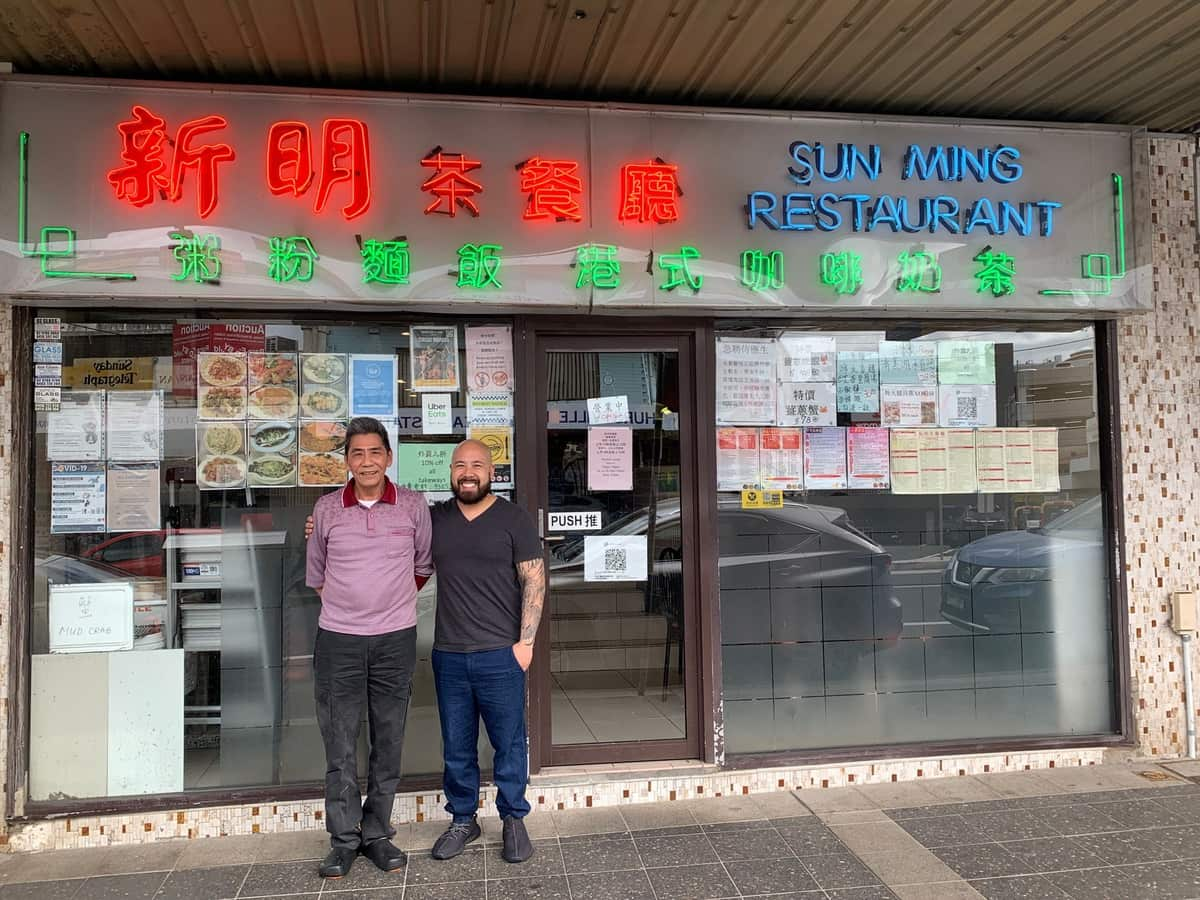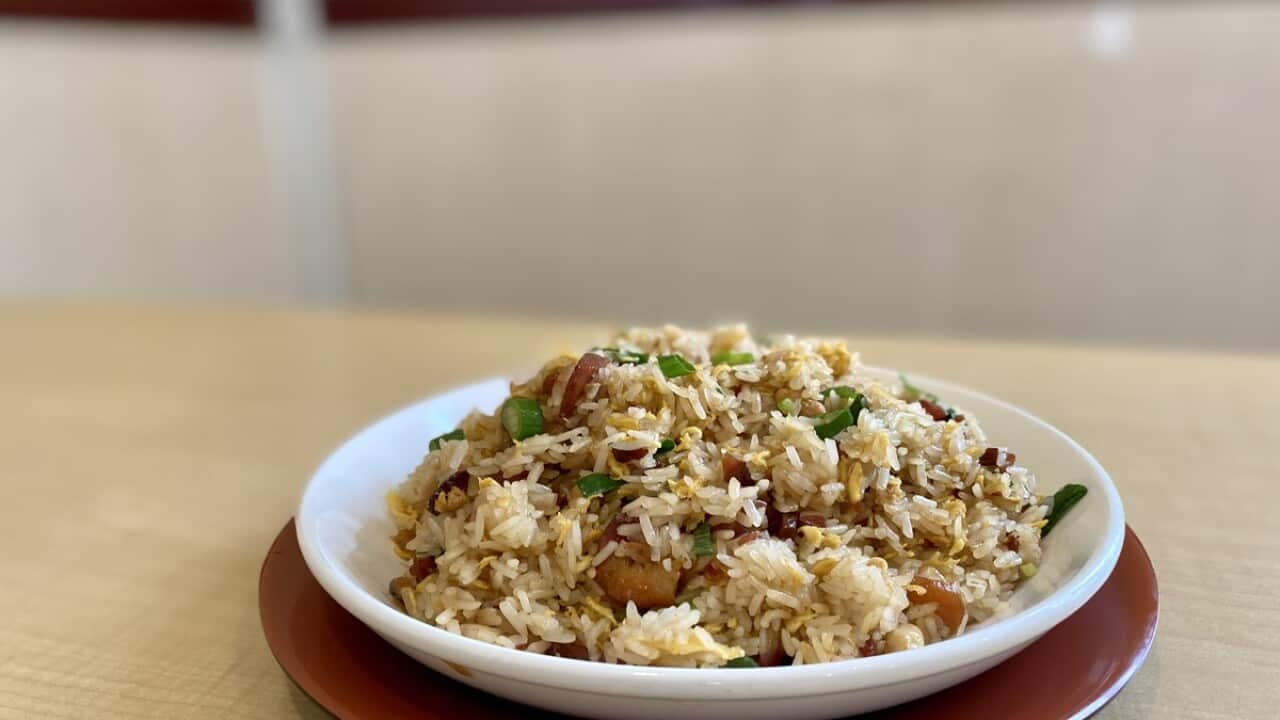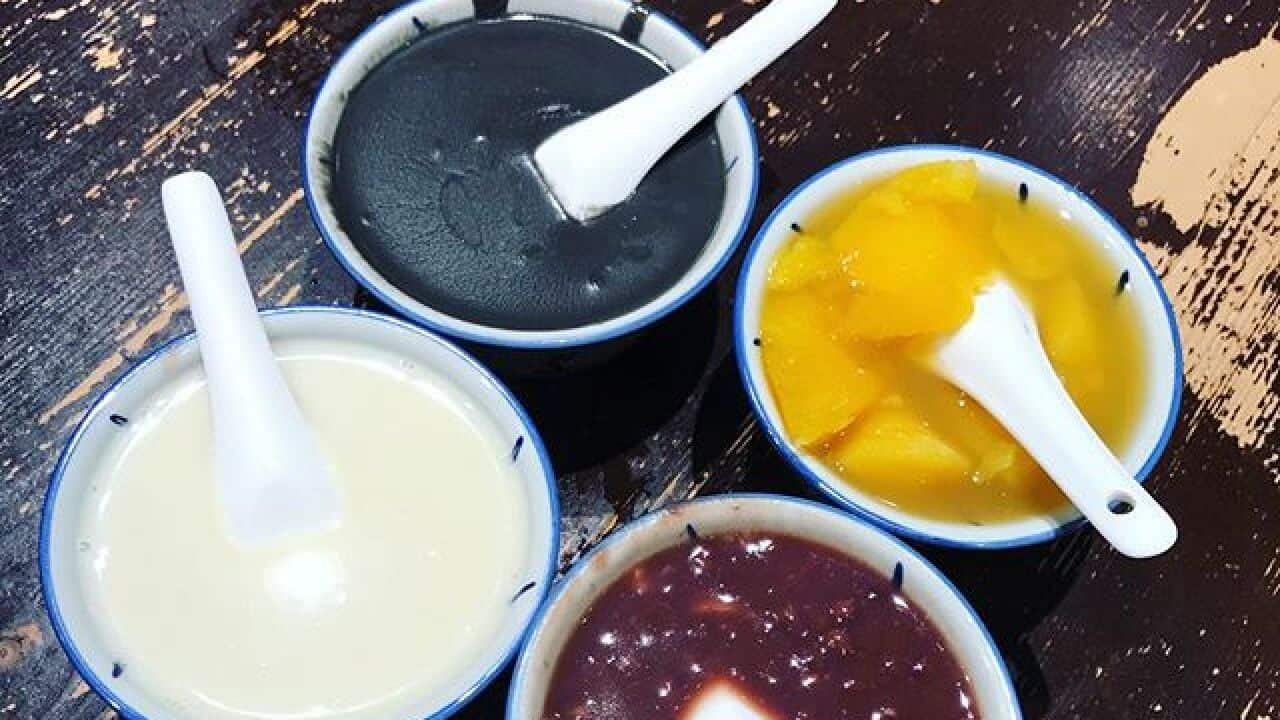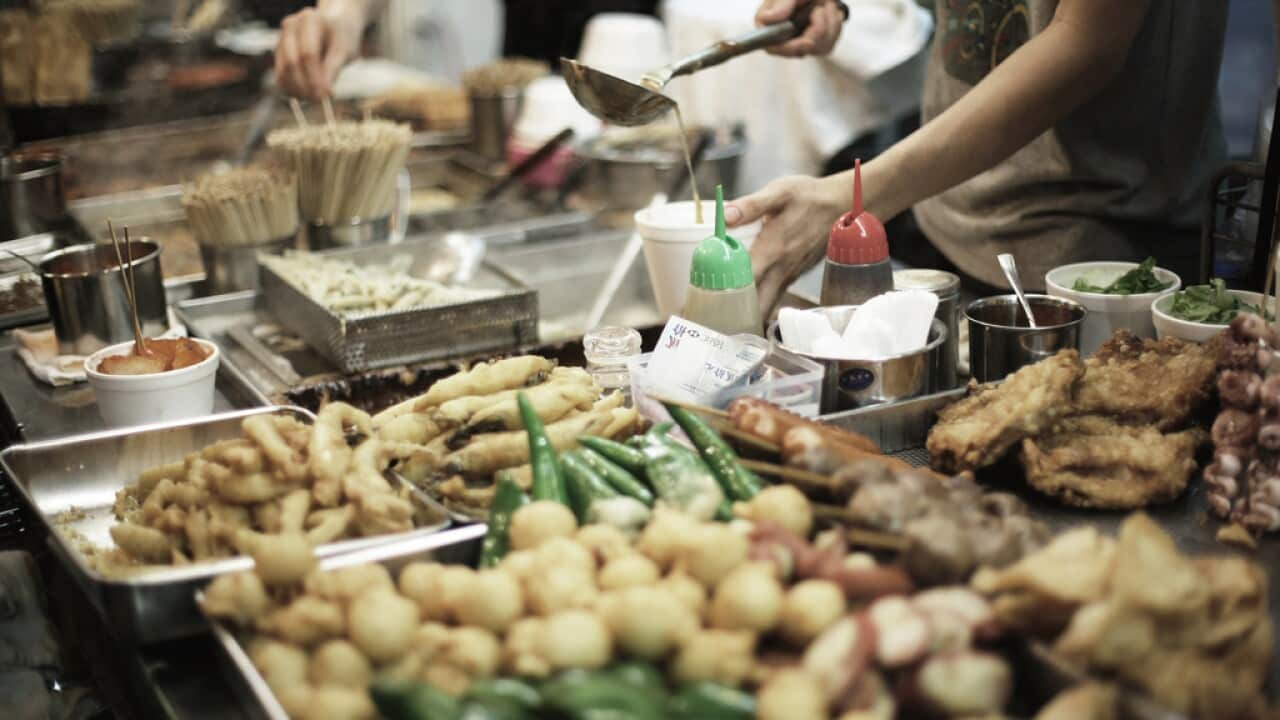--- airs weeknights on SBS Food at 7.00pm and 10.00pm, or stream it free on . Catch the duck episode Monday 11 October. ---
For David Chan, a simple dish of Cantonese sticky rice — or lo mai fan — means so much more than just a plate of food.
It's a snapshot in the history of his father Chan Tak-ming's struggles as a child growing up in 1960s Hong Kong, and was passed down from Chan's grandmother to his father to him.
Similar to the found at yum cha restaurants, lo mai fan usually embraces the classic Cantonese flavours of dried shrimp, Chinese sausage (lap cheong) and mushrooms. It's sticky, glossy and glutinous in texture, and cooked in the signature Hong Kong wok known as wok hei, which is known to give food a . Chan learned about the origins of his family's lo mai fan recipe from his now 95-year-old grandmother and his father as he was growing up.
Chan learned about the origins of his family's lo mai fan recipe from his now 95-year-old grandmother and his father as he was growing up.

David Chan's lo mai faan, served at Sun Ming Restaurant. Source: Kevin Cheng
It has come to not only represent his family's achievement as restaurant owners after his father moved from Hong Kong to Australia some 36 years ago, but the immense struggle his father went through beforehand.
"My dad started cooking when he was 10 years old. He was pushing those hawker carts on the streets of Hong Kong with my grandma, selling lo mai fan," Chan tells SBS Food.
"It was illegal to be selling food on the street. My grandma told me that she'd be pushing the cart with my dad and the police would roll up, so they'd have to start running away from the police."
As the eldest of five children, Chan's father had to help out with the hawker cart. His grandmother raised his younger siblings while they worked. This often meant she would carry a baby in her arms for the whole day.
"She would be carrying my aunty while they were working, grabbing groceries in the wet markets. It's insane," Chan says.
Chan has now taken over the family business as owner-chef at in Sydney's south, and lo mai fan is becoming more popular with those looking to experience a nostalgic Hong Kong flavour.
"The way we make it, it's how my dad used to do it — the ingredients and everything," says Chan.
But like his father taught him, the secret lies in the wok's heat.
"He was always telling me that the heat of the wok is the essence of the dish. And that is the essence of HK cooking. He was always talking about that Hong Kong flavour," Chan says.
[Dad] was always telling me that the heat of the wok is the essence of the dish.
But in Chan's family, who makes the best lo mai fan? "[My dad] always said: 'If you ever want to know how to make this properly, ask your grandma'. It's true that you always think your mum's cooking is the best," Chan says. These days, his grandmother stills cook with a wok. "I've never seen an old lady cook with a wok," he says.
After COVID-19 devastated the restaurant industry in 2020, Chan's family suffered more heartbreak when his father died suddenly in August.
"My dad cooked until the very end. He passed away two months ago, and the day that he died, he was cooking next to me.
"He passed away in his sleep. This year he would've just retired, he would've turned 66 last month," Chan says.
His father's passing has also affected his uncle and father's business partner Chi Sun-cheng or Uncle Sun. Sun says, "I was heartbroken. David's father left us so suddenly. Now that David has taken over, if he has any problems he will ask me for advice, which of course I will give it to him.
Sun says, "I was heartbroken. David's father left us so suddenly. Now that David has taken over, if he has any problems he will ask me for advice, which of course I will give it to him.

Former owner of Sun Ming restaurant Chi Sun-cheng (left) and his nephew, current owner chef David Chan. Source: Kevin Cheng
"It was the happiest time when I was cooking and [co-]running Sun Ming. It's my wish for the name of the restaurant Sun Ming, which is my name and [David's] father's name, to continue to live on through David."
The 31-year-old is also determined to continue his family's legacy. It was and remains the quintessential Hong Kong cha chaan teng: literally translated from Cantonese as "tea restaurant", but also known as a Hong Kong-style cafe.
In fact, it's believed to be the longest-surviving cha chaan teng in Sydney and is celebrating its 25th anniversary this year.
THE SPECIAL EXPERIENCE OF CHA CHAAN TENGS

Try the mega French toast and egg sandwiches at this Hong Kong eatery
But Chan doesn't want to just keep running Sun Ming: he wants to create more Hong Kong-style eateries that carry the family name.
Surviving COVID-19 may be the priority for now, but the family's beloved lo mai fan will always be on the Sun Ming menu.
Cantonese sticky rice (lo mai fan)
Cantonese sticky rice is similar to lo mai gai that's served at yum cha. This version often uses Chinese sausage instead of chicken.
Serves 2-3
Ingredients
- 2 cups glutinous rice (soak in cold water overnight or at least 6 hours)
- 50 g dried prawns (soak in hot water for 20 minutes)
- 2 Chinese sausages (lap cheong)
- 100 g preserved pork belly
- 2 tbsp oil
- 2 spring onions
- 50 g fried peanuts
- 3-4 eggs
- 250 ml chicken stock
- ½ tsp salt
- ½ tsp chicken powder
- ½ tsp sugar
1. Prepare your ingredients: strain the rice and dried prawns, dice Chinese sausages, pork belly, cut the spring onions, beat eggs.
2. Add ½ tsp salt, ½ tsp chicken powder, ½ tsp sugar to the chicken stock and mix well.
3. Heat wok to medium, add 1 tablespoon oil then add Chinese sausages, pork belly and dry prawns, stir-frying for about a minute or two.
4. Add rice and ¼ of the chicken stock. Stir the rice around while the rice absorbs the stock. When absorbed add another ¼ of chicken stock. repeating this until stock is all used. Try the rice. If not yet cooked, add some more chicken stock and stir until cooked through.
5. Take the rice out, set aside. Reheat wok and add 1 tbsp oil before adding beaten eggs. Once cooked, add sticky rice. Stir fry with spring onions and peanuts, and serve on a plate.
Note: Glutinous rice, lap cheong and preserved pork belly can be found at Asian grocers.
MORE HONG KONG FOOD

Cantonese fried noodles








